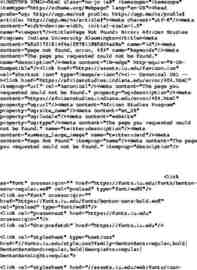Computer Graphics chapter 1 Dr. Jehad Q. O. Alnihoud Email:
25 Slides484.00 KB
Computer Graphics chapter 1 Dr. Jehad Q. O. Alnihoud Email: [email protected] Phone: 3354 1
Books F.S. Hill, Computer Graphics Using OpenGL, Prentice-Hall (2001). Mason Woo, OpenGL Programming Guide, Addison Wesley (2000). Hearn and Baker, Computer Graphics, Prentice-Hall (1997). RM [1]-2
Books (Supplementary reference) RM Foley, V. Dam, Feiner, Hughes, Computer Graphics Principles and Practice, 2/e, Addison Wesley, 1997. Edward Angel, Interactive Computer Graphics, Addison Wesley, 1997. Zhigang Xiang, Schaum’s Outlines: Computer Graphics, McGrawHill, 2001. Shreiner D, OpenGL Reference Manual, Addison-Wesley, 2000. [1]-3
Course Assessment Coursework 50% First Exam 15% Second Exam 15% Group Project 10% Lab 10% Final Exam 50% Attendance in both lecture and lab sessions is compulsory. RM [1]-4
Graphics Applications Art and Entertainment Animations Movies Commercials Special Effects RM [1]-5
Graphics Applications Image Processing Analysis, Reconstruction Medical Imaging Movies RM [1]-6
Graphics Applications Simulation Modeling and Analysis Virtual Environments RM [1]-7
Graphics Applications Scientific Visualization Data Representation and Plotting 3D Views RM [1]-8
Graphics Applications CAD/CAM Industrial Design Structural Design Surface Modeling RM [1]-9
Graphics Software Packages Early graphics libraries: RM GKS (Graphical Kernel System) PHIGS OpenGL (Silicon Graphics) Java2D (Sun Microsystems) Java3D (Sun Microsystems) VRML (Silicon Graphics) [1]-10
Graphics: Main Components Theory Analytical Geometry Vectors and Matrices Algorithms Implementation RM Eg: Line drawing, Filling etc. Programming (OpenGL) [1]-11
Graphics Hardware Line Drawing Devices: Eg. Pen Plotters Advantages: Perfect lines, Sharp Diagrams Disadvantages: Not suitable for filled regions. RM [1]-12
Graphics Hardware Raster Devices: Create pictures by displaying dots Eg: Video monitor, dot-matrix printer, laser printer, ink-jet printer, film recorder Advantages: Filled, shaded regions are easily displayed Disadvantages: Jaggies Pixel RM [1]-13
Pixel Depth Pixel depth refers to the number of bits used to represent a pixel value. 1 bit/pixel: 0 1 2 bits/pixel: 0 0 2 Levels (Bi-level image) 4 Levels 0 1 1 0 1 1 RM [1]-14
Pixel Depth 1 bit per pixel produce 2 levels (bi-level image). 2 bits per pixel produce 4 levels. 8 bits per pixel produce 256 levels. RM In general, if the pixel depth is n, then it is possible to have 2n levels. [1]-15
Raster Display RM Most display used for computer graphics nowadays are raster displays. Image presented in display surface that contains certain number of pixels. Eg. 480 x 640 (r x c). Frame buffer is a region of memory sufficiently large to hold all the pixel values for display. [1]-16
Frame Buffer System with 64 color (3 DACs): RM Each DAC uses 2 bits/pixel. Total color: 4 x 4 x 4 64 If the display surface is 1024 x 1280, then the memory required for frame buffer is 0.9375 MB Monochrome Video display: Only one DAC required. 6 planes of memory in frame buffer gives 26 64 level of gray. [1]-17
Frame Buffer System with 24 bit color (3 DACs): RM Each DAC uses 8 bits/pixel. (Total 24 bits/pixel) Total color: 28 x 28 x 28 224 If the display surface is 1024 x 1280, then the memory required for frame buffer is 3.75MB [1]-18
Color Models: RGB Diagram RGB Model is used for colored light sources RGB Model is additive Basis colors: R, G, B R: Red [1, 0, 0] G: Green [0, 1, 0] B: Blue [0, 0, 1] C: Cyan [0, 1, 1] M: Magenta [1, 0, 1] Y:Yellow [1, 1, 0] W:White [1,1,1] K: Black [0,0,0] RM
Color Models: RGB Cube RM Complementary Colors: Two colors that combine to form White. Eg. Red, Cyan. Gray Values: Every point on the primary diagonal has equal values for all the components. [1]-20
Color Models: CMY Diagram CMY Model is used for colored pigments CMY Model is subtractive RM Basis colors: C, M, Y C: Cyan [1, 0, 0] M: Magenta [0, 1, 0] Y: Yellow [0, 0, 1] R: Red [0, 1, 1] G: Green [1, 0, 1] B: Blue [1, 1, 0] W:White [0,0,0] K: Black [1,1,1] [1]-21
Color Models: RGB - CMY (r, g, b)RGB (1,1,1) (c, m, y)CMY Light A red colored surface absorbs cyan from a white light RM [1]-22
Color Models: HSV HexCone RM [1]-23
Color Models: HSV H (Hue): 0 to 360 degrees S (Saturation): 0 to 1 V (Value): 0 to 1 Examples: Eg. RM 0: Red, 60: Yellow . 0: Axis, 1: Boundary 0: Vertex, 1: Base Yellow: [60, 1.0, 1.0] Black: [ -, -, 0.0] White: [-, 0.0, 1.0] [1]-24
RGB Color Definition (OpenGL) Set a particular color: glColor3f(r,g,b); Set a background color: glClearColor(r,g,b,1); Clear the window to background color: glClear(GL COLOR BUFFER BIT); RM [1]-25






























